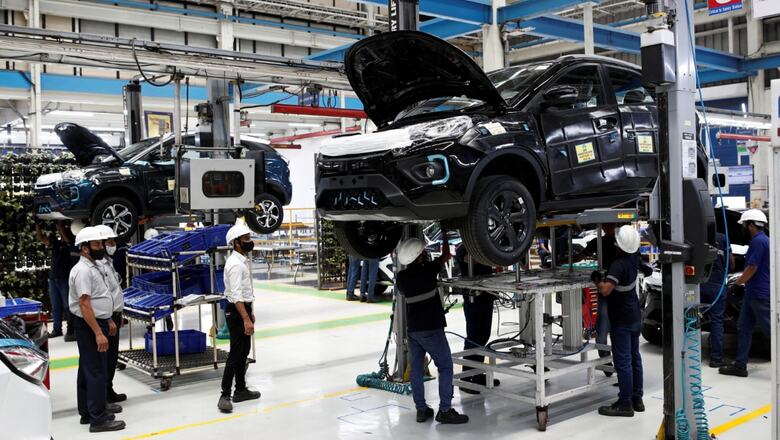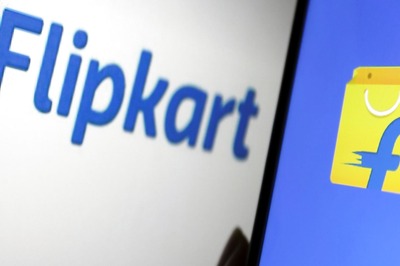
views
India is one of the fastest growing economies in the world, aspiring to become a $5 trillion economy by 2026 and $40 trillion by 2047. However, to become a global economic powerhouse, several actions need to be taken, strengthening the country’s growth centres being one of them. Cities are the engines of the modern economy and they continue to shape the trajectory of global growth in unprecedented ways. However, the most important cities of today may be quite different from those leading the charge in the future.
Pune, the erstwhile home and centre of power of the Marathas, is Maharashtra’s geographically largest city, and the seventh largest city in India. Home to over 1,300 colleges, Pune has made its mark as an education epicentre, winning itself the title of “The Oxford of the East”.
With close to 3,200 start-ups, it has also emerged as a successful start-up hub in recent years with information technology (IT), engineering and automotive companies sprouting. More and more successful fintech companies are emerging from Pune, with the several advantages it offers turning the city into one of the fastest growing fintech hubs in India. Thanks to the convergence of a range of factors like the availability of quality talent, affordable real estate, and improving access to capital with an increasing density of investors and mentors, Pune is one of the top 5 FDI destinations, top 5 manufacturing exporters, and the largest engineering goods manufacturer in India.
Pune is a welcoming city with a Mumbai or Bengaluru kind of ecosystem but without the issues these metros face, like traffic, congestion, and overcrowding of both people and resources. It offers better infrastructure in terms of lower cost of establishing a business, easy access to human resources and talent with a deeper industry-specific understanding.
While Pune is now the biggest city in Maharashtra, its civic infrastructure budget is nowhere close to other major cities like Mumbai and Bengaluru, posing a big challenge for its overall development. With a GDP of $69 billion, Pune is ranked No.7 in India. As Mumbai leads with $310 billion, Pune is preceded by Hyderabad at No.6 with $75 billion and Chennai at No.5 with $79 billion. Without a doubt, a dedicated international airport and improved civic infrastructure can take us above Chennai. Pune is the largest city in the country that is not a state capital and hence it misses out on attention.
Identifying key bottlenecks that constrain Pune from fully realising its potential as a growth engine and developing implementable solutions to these bottlenecks, including workable structures of governance and mechanisms for coordinating spatial and economic planning, is extremely crucial. Pune’s infrastructure has deteriorated rapidly post-Covid. The traffic chaos, garbage mismanagement, and the sad state of roads are now getting overwhelming.
Given the city’s diversified youth population, thriving IT and fintech industry, robust R&D infrastructure, increasing numbers of innovation centres, 50+ research labs and institutes, efficient medical and healthcare ecosystem, flourishing automotive, manufacturing and EV sector, Pune should focus on becoming a ‘knowledge-driven economy’ that generates higher per capita income. With one of the biggest defence commands in the country, Pune also offers huge potential for MSMEs and small businesses to work closely with the defence sector. Driven by the government’s ‘Make in India’ initiative, about 80 percent of the parts and subassemblies for the defence sector are being manufactured by MSMEs, opening enormous business opportunities.
To effectively realise the potential of Pune, there is a need for enabling infrastructure that must include the much-awaited international airport for passenger and cargo traffic. We must also develop an institution and a culture of having a dedicated investor liaison cell from the municipal/metropolitan authority. These investments create jobs and economic growth for the constituency and hence deserve due attention.
Realising Pune’s potential in culture, heritage, and tourism, rigorous efforts towards cleaning and waste management initiatives, improving public transport infrastructure, river cleaning and riverfront development are some of the key areas that can have a massive impact on the city’s future growth, development and economy. As policymakers, we should converge our efforts in improving the quality of life of Punekars by focusing on the development of social, economic and physical infrastructure using action-oriented advocacy, making the city a better place to live, work, study, and invest in.
Pune undoubtedly can become the fastest growing urban agglomeration and with the right focus and approach, it can deliver on the promise to surpass other metros and mini-metros, in not just wealth creation but also sustainable development.
Sudhir Mehta is founder and chairman of Pinnacle Industries & EKA Mobility, president of Mahratta Chamber of Commerce, Industries and Agriculture (MCCIA), Pune. Twitter: @sudhirmehtapune. Views expressed are personal.
Read the Latest News and Breaking News here




















Comments
0 comment